Author: Greg Foster
As an unrepentant hophead, I often find myself intrigued by the results our xBmts yield about this splendid little plant and recently found myself poring over the findings suggesting dry hop temperature produces a distinguishable difference in overall character. While seemingly expected, at least based on comments of people once the article was published, my curiosity was piqued because I’ve experienced different results with a cold dry hopping technique known as keg hopping.
What makes keg hopping unique from other dry hopping methods is the fact the hops remain suspended in the serving keg throughout the lifespan of the beer, from first to last pour. It’s basically a prolonged cold dry hop, one I’ve personally experienced as imparting great hop character. Some other advantages of keg hopping include the ability to purge oxygen from the hops as well as allowing one to force carbonate while simultaneously dry hopping. But the method has its critics with some warning that extended dry hop lengths can leech grassy off-flavors into the beer, which I’ve not personally found to be the case. Rather, I have noticed dry hopping cold beers does take a little longer to reach maximum aroma, usually peaking around day 10, which confirms the previously mentioned xBmt findings. But from that point on, my biased opinion is that keg hopping produces beers that are aromatically similar to those dry hopped warm and the aroma seems to last a bit longer.
As I pondered the findings from the dry hop temperature xBmt, I wondered if the amount of time each beer spent on the hops may have been the reason they were perceived as different. Would a slightly longer dry hop duration achieve an aroma as pungent as the more traditional warm dry hopping method? Is the cold keg hopping method I’m using as beneficial as I think?
| PURPOSE |
To evaluate the differences between two beers of the same recipe where one was dry hopped warm (72°F/22°C) in primary for 6 days and the other keg hopped cold (36°F/2°C) for the duration of serving.
| METHOD |
I’m a West Coast brewer who has little experience with NE-style ales, so in the interest of broadening my horizons, I chose to make Ed Coffey’s HopWards Pale Ale for this xBmt.
HopWards NE-Style Pale Ale
Recipe Details
| Batch Size | Boil Time | IBU | SRM | Est. OG | Est. FG | ABV |
|---|---|---|---|---|---|---|
| 9 gal | 60 min | 57.9 IBUs | 5.7 SRM | 1.055 | 1.014 | 5.4 % |
| Actuals | 1.055 | 1.009 | 6.0 % | |||
Fermentables
| Name | Amount | % |
|---|---|---|
| ESB Pale Malt (Gambrinus) | 16 lbs | 82.05 |
| Oats, Flaked | 3.5 lbs | 17.95 |
Hops
| Name | Amount | Time | Use | Form | Alpha % |
|---|---|---|---|---|---|
| Magnum | 17 g | 60 min | First Wort | Pellet | 12.2 |
| Amarillo Gold | 37 g | 5 min | Boil | Pellet | 8.2 |
| Centennial | 37 g | 5 min | Boil | Pellet | 10 |
| Simcoe | 37 g | 5 min | Boil | Pellet | 12.3 |
| Amarillo Gold | 37 g | 20 min | Aroma | Pellet | 8.2 |
| Centennial | 37 g | 20 min | Aroma | Pellet | 10 |
| Simcoe | 37 g | 20 min | Aroma | Pellet | 13 |
| Amarillo Gold | 114 g | 5 days | Dry Hop | Pellet | 8.5 |
| Centennial | 114 g | 5 days | Dry Hop | Pellet | 10 |
| Simcoe | 114 g | 5 days | Dry Hop | Pellet | 13 |
Yeast
| Name | Lab | Attenuation | Temperature |
|---|---|---|---|
| London Ale III (1318) | Wyeast Labs | 73% | 64°F - 74°F |
Download
| Download this recipe's BeerXML file |
A couple days before my brew day, I split a single pack of Wyeast 1318 London Ale III yeast between two jars of pre-canned wort and got them spinning.
I weighed my salts and acid, measured out my grain, milling it on my lightning fast monster mill MM3.
Rather than go with my usual tricked-out RIMS setup, I decided to test the simpler Mash In A Bag (MIAB) approach in hopes it would make performing simultaneous mashes less complicated in the future. Still using my electric rig for all heating purposes, the added gear certainly made for an unusually crowded kitchen.
Using my HotRod heat stick, I heated the strike water in the cooler to 162°F/72°C, presumably pre-heating the MLT along the way. I then mixed in the grain and checked to see if I’d hit my target mash temperature…

What the hell?! A far cry from my target of 154°F/68°C, I was even less thrilled when a I returned a couple minutes later to find the temperature had dropped to 140°F/60°C. I pulled off a couple gallons of wort, heated it to 190°F/88°C, then stirred it back into the mash, which resulted in the temperature stabilizing at 153°F/67°C. Good enough! After a 1 hour rest, I transferred the wort into my keggle and proceeded with the 60 minute boil with hops added per the recipe, then I quickly chilled the wort to 185°F/85°C and tossed in a charge of hops for a brief hop stand.
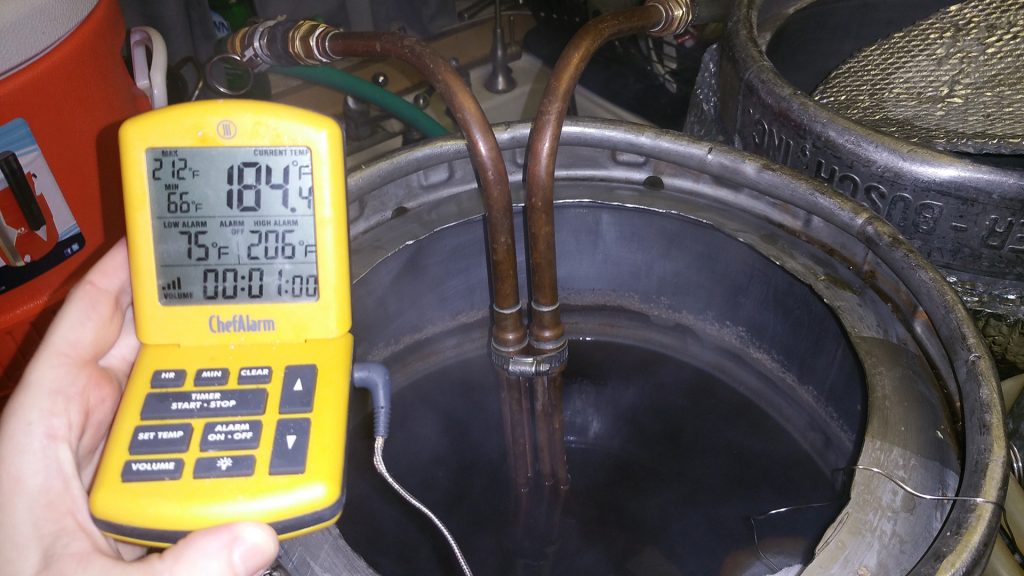
Twenty minutes later, I finished chilling the wort to my preferred pitching temperature and took a hydrometer measurement that showed it was at a respectable 1.055 OG.
After racking the wort to a sanitized 10 gallon corny keg turned fermentor, I pitched both jars of yeast.
The beer fermented for five days at 66°F/19°C before I began to raise the temperature to 70°F/21°C, where it remained for another 9 days, at which point I took a hydrometer measurement that confirmed it was at FG.
At this point, I chilled the beer in the large fermentation keg to 50°F/10°C, which split the difference of the two target dry hop temperatures. In preparation for introducing the variable, I sanitized and oxygen purged two kegs. I then added equal portions of dry hops to two identical muslin bags that were secured to the outside of each keg with dental floss and left dangling about 7 inches above the bottom of the kegs.
Before racking the cool beer from the fermentor, I pressurized and purged each serving keg with CO2 a few more times, 20 to be exact… the local CO2 refill place does indeed love me. I used a scale to ensure each keg received the exact same quantity of beer.
The keg hopped beer was immediately placed in a 36°F/2°C fridge where it would remain for the duration of the xBmt; the more traditional warm dry hop beer was left at room temperature for a full 6 days before being pressure transferred to a fresh oxygen purged serving keg. Both kegs were hit with CO2 for force carbonation at this point. Then I did the unthinkable and let them sit in cold storage for another month. The ridiculous things I do for science. When it finally came time to gather data, both beers looked identically sludge-like. Success!
| RESULTS |
Data for this xBmt was collected at a monthly Pacific Gravity Homebrew Club meeting where 26 people of all experience levels graciously lent their taste buds to the cause.
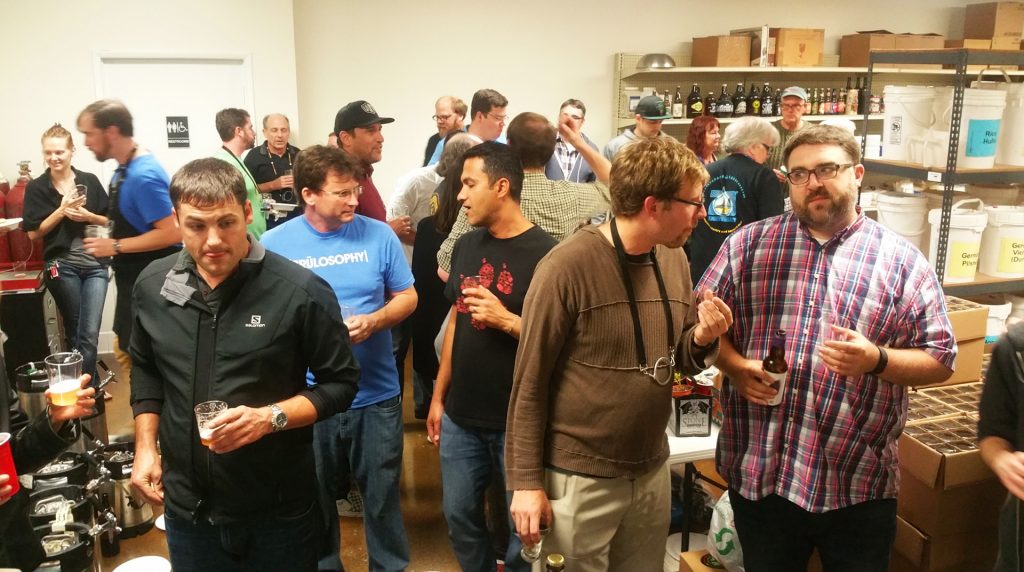
Each participant was blindly served 1 sample of the warm dry hop beer and 2 samples of the cold keg hopped beer in different colored opaque cups then asked to identify the unique sample. In order to reach statistical significance with this sample size, 14 (p<0.05) tasters would have had to make the accurate selection. In the end, only 13 (p=0.06) tasters correctly chose the odd-beer-out, which suggests a beer dry hopped warm for 6 days then stored for a month was not reliably distinguishable from a beer that sat on the same dry hop charge in a cold environment for the entire duration.
Since the results were did not reach a statistically significant level, the following details ought to be taken with a grain of salt. Of the 13 participants who made the correct selection on the triangle test, 7 reported preferring the keg hop beer, 2 endorsed the warm dry hop beer as the one they liked most, 2 said they perceived a difference but had not preference, and 2 felt there was no difference between the samples. Moreover, after the data was gathered and before I shared the nature of xBmt, I asked many of the correct participants for their impressions on the beers, all but two stated the difference was predominantly aromatic and described the keg hopped sample as being more hoppy, dank, and fresh with a stronger aroma and less sharp flavor than the warm dry hop beer.
My impressions: Triangle tests I performed on myself proved difficult since I perceived these beers as being fairly similar, but I was ultimately able to identify the unique sample in every attempt. To me, the keg hopped beer had a stronger, hoppier aroma to it, which was the main thing I used to identify the different sample. I found it much more difficult to distinguish the beers by flavor alone. Overall, I preferred the more pronounced hop character of the keg hopped beer and didn’t notice any grassy notes or other off-flavors commonly believed to result from extended dry hopping. In fact, after over two months in contact with the dry hops, the beer was still enjoyable with no noticeable off-putting grassiness.
Ed’s HopWards recipe is fantastic and served as an excellent introduction to NE-style Pale Ales for me. I look forward to trying more and would recommend anyone tinkering with the idea of brewing this style give this a go!
| DISCUSSION |
When it comes to getting as much hop character into a beer as possible, there are a growing number of methods, all of which have their advocates and critics. Arguably the most commonly utilized of these techniques is dry hopping, which for most involves tossing a charge or two of hops into their beer toward the end of fermentation, when it’s still warm. However, those seeking even more pungent hop aroma have found success suspending bagged hops in their cold beer where it remains until the beer is gone, a method known as keg hopping. While often used in tandem, the purpose of this xBmt was to investigate the impact beer temperature and contact duration had on the hop character in a NE-style Pale Ale. Based on these results, it seems a brief warm dry hop produces a beer that is not reliably distinguishable from a similar beer that was dry hopped cold over an extended period of time.
I’ll keep both methods, regardless.
The difference between the warm dry hop and cold keg hop beers were far more subtle than I expected, but to me it was real. With my intimate understanding of the variable, I knew to focus most of my attention on aroma, which is the aspect I found most disparate between the samples. To my surprise, the beers tasted almost exactly the same, it makes sense to me that blind tasters wouldn’t be able to distinguish them. While it’s not my point to question the validity of these results, there is always the possibility of Type II error, aka a false negative, which occurs when an experiment fails to reject a false null hypothesis. Alas, there’s no good way to know for sure if that’s the case here, leaving us with one option, the only good option: exBEERiment more!
What are your thoughts on keg hopping versus standard dry hopping? Have you noticed dry hop temperature or length playing a role in how the hops are ultimately expressed. Please share your experience in the comments section below!
Grains for this xBmt were provided by:
Support Brülosophy In Style!
All designs are available in various colors and sizes on Amazon!
Follow Brülosophy on:
FACEBOOK | TWITTER | INSTAGRAM
If you enjoy this stuff and feel compelled to support Brulosophy.com, please check out the Support Us page for details on how you can very easily do so. Thanks!


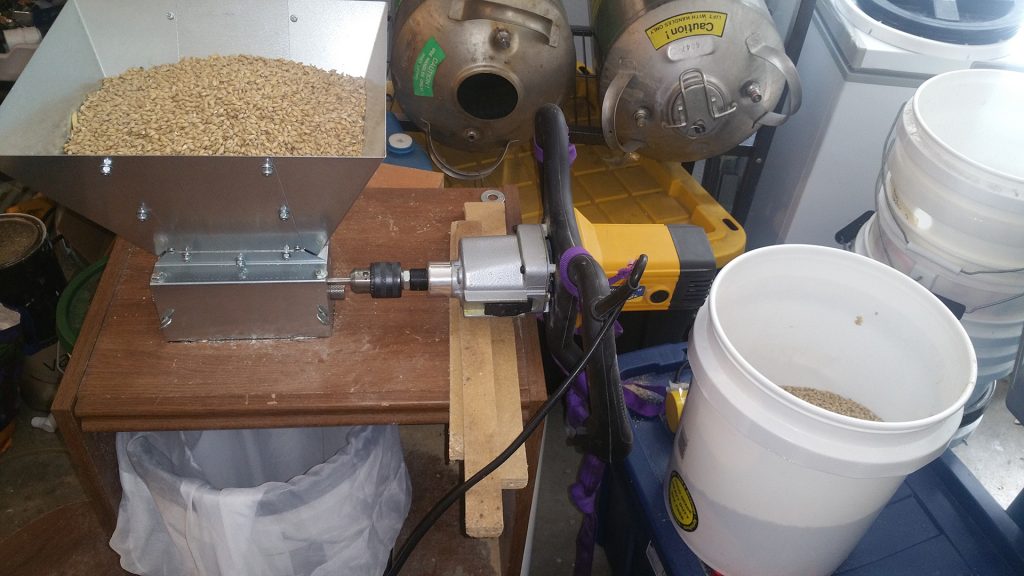

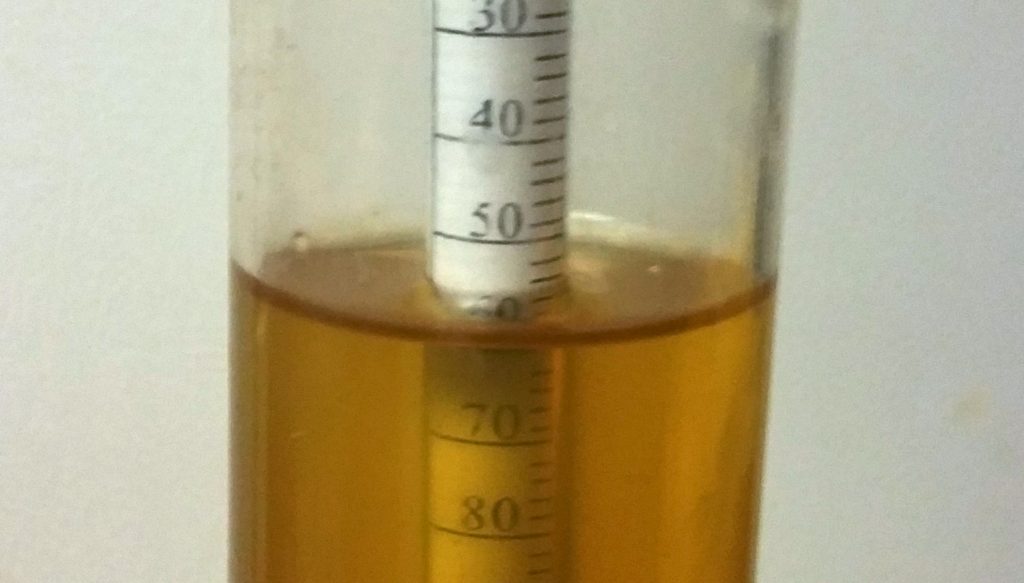
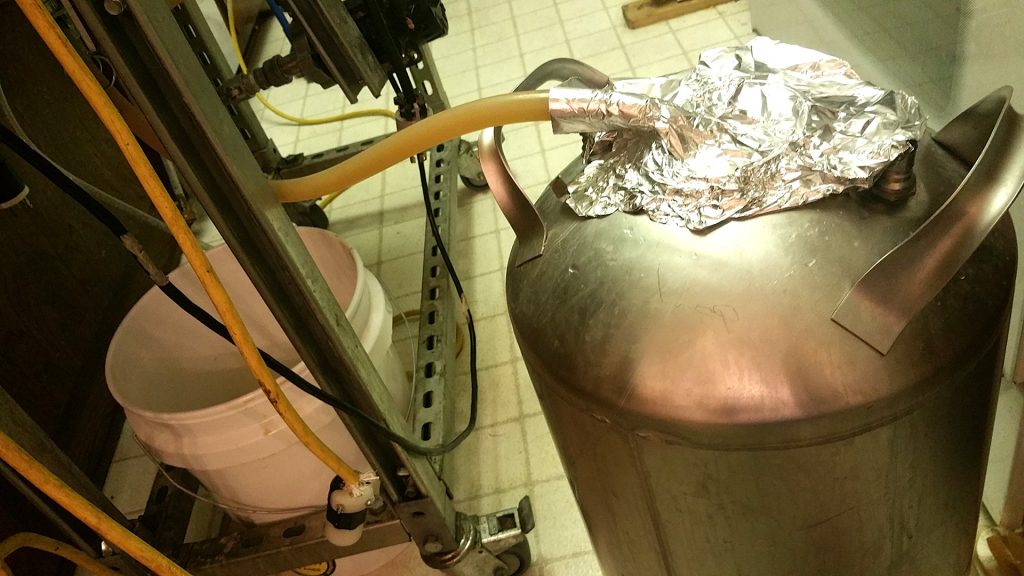
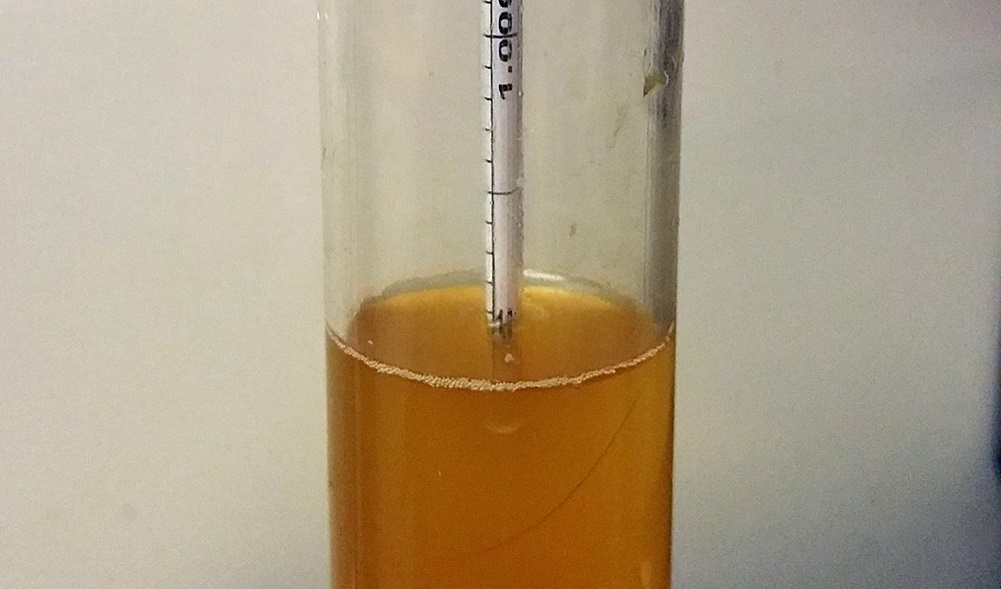

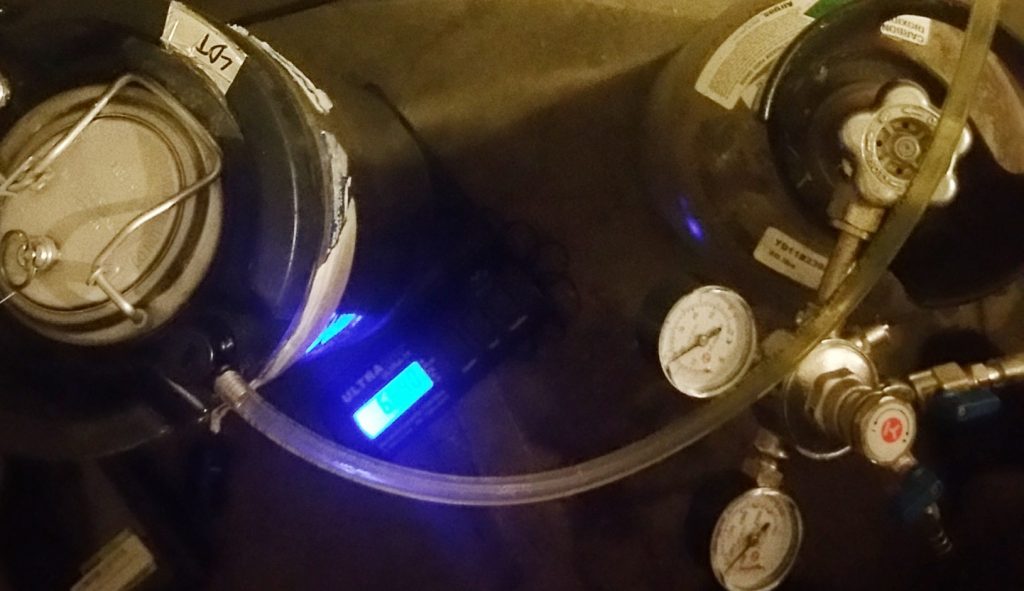
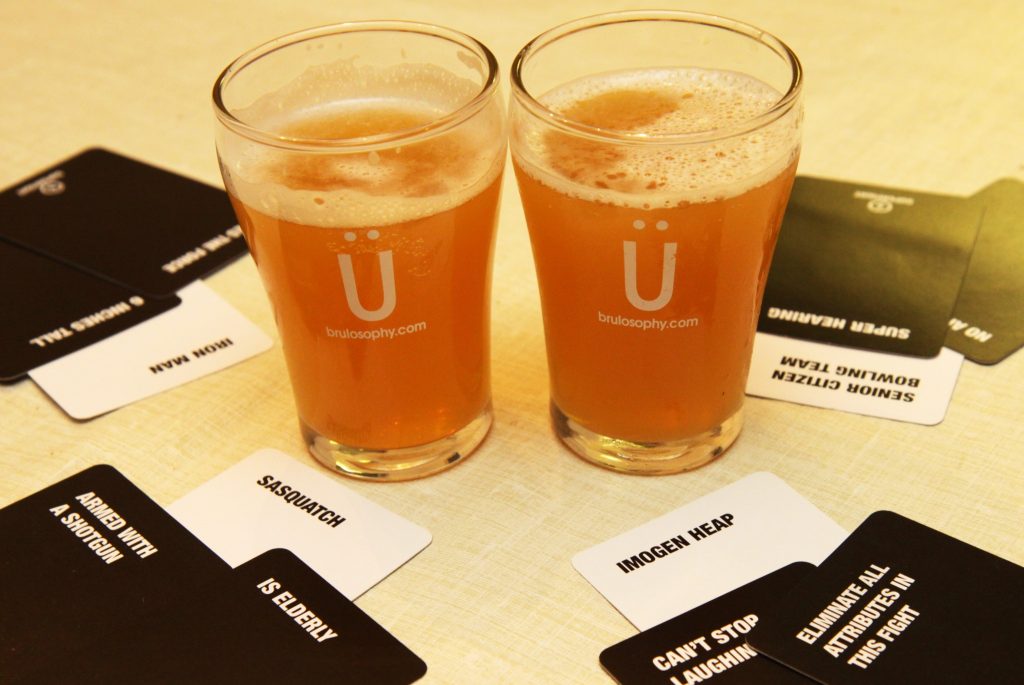











41 thoughts on “exBEERiment | Warm Dry Hop vs. Cold Keg Hop In An American Pale Ale”
Very interesting. I thought that my keg hopped beers definitely had a different character than I am used to with warm dry-hopped, but maybe something else was at play. Just a clarification: looks like you used around 4 oz in the hopstand and then around 6 oz dry hops for each of the two different beers? Have you reduced your hopstand amounts over time? I have been using around 1 oz per gallon in the kettle for hopstand, but maybe it is a waste. Do you think a lot of the cloudiness of this style comes from the flaked adjunct additions? Seems like a west coast IPA would be pretty clear after a month in the freezer.
Lately I’ve been reducing my hop stands in favor of bigger dry hops, but it’s something I still want to do more testing on. I’m definitely of the opinion that the cloudiness comes from the flaked oats, I’ve never made a beer anywhere near this cloudy before.
London III doesn’t flocculate as well , even when using biofine.
Awesome, thanks! Another question: can you say why you left the beers in cold storage for so long? This doesn’t mimic typical homebrew procedures and leaves me wondering whether the difference wouldn’t have been more perceptible had the tasting been closer to the original dry-hop date. It’s not unreasonable to expect the two identical charges to become more similar as time goes by, sitting at the same temperature. In fact, I’m willing to bet that you would have achieved significance had the tasting been done sooner, since you were already so close.
Many people believe that the extended contact time of keg hopping can lead to grassy off flavors. I waited a month to see if any of those supposed grassy off flavors would develop and become noticeable to my tasting panel.
I’ll have to try keg hopping next time. The main reason I’ve held off for so long was a concern with potential grassy notes from pellet hops. It also wastes a lot of beer in primary.
From my own experience, it depends on the type of hop used. Something like Galaxy, you have to be very careful that you aren´t using too much. Certain hops i don´t have a problem with, others i do.
Yeah I echo Nick’s sentiment. You left a fresh IPA to sit around for a month? Any variable will be indistinguishable if you leave it around for a month. I turn my IPAs around in two weeks so I drink them fresh when they taste best. I see why the results were nothing. Try this again if you started the tasting five days after the dry hop process began.
He goes to great lengths to remove oxygen at every step that I doubt there could be much degradation of flavor, and even aroma, sitting in an O2 devoid environment since the beginning of fermentation, much of it cold. There’s a lot of to do about freshness, but this process of much different from splashing beer around in bottling buckets and such.
The whole point of the xBmt is to explore methods designed to prolong hop aroma. The month marker is EXACTLY what was being tested here. Did you even read the xBmt?
I had the same thought about the methods. Seems like you went past the normal “best by” date of an ipa with that month wait.
Thank you for doing this exbeeriment. I have also hopped in the keg and always worry about the dreaded “grassy” off flavors, so I remove the bag after about 2 weeks or so (although I have forgotten to do so on a few occasions). I HAVE had issues where hop material eventually gets into the beer though. I used paint strainer bags that seem to have very small holes. I see you used the cotton muslin bags. I shall give those a try.
My only concern with that month-long wait would be losing some of the potentially different characters the experiment was designed to compare, but point taken on trying to make sure there was ample time for grassy-ness.
I see. Thanks for doing that, it really eased my mind about the potential for grassy off-flavors.
I am imagining that as the keg hopped beer gets close to the bottom, and the hop bag becomes suspended above the top of the beer in the bottom of the keg, it might drain some exceptionally “hop juicy” beer at the very end. I was wondering if you noticed any kind of change in the Aroma or Flavor as the keg hopped beer approached the end?
Since everything was transferred to serving kegs, I don’t think that would hold as it would be “mixed”.
I think he meant the hops in the keg hopped beer. Since the hops are in the serving keg, they would drain once the hops are suspended higher than the beer level.
I’ve thought about this, but I haven’t really noticed much of a difference at the end of a keg hopped beer.
Interesting xBmt as always! Unwaxed unflavoured dental floss I’m guessing?
Me, I like a bit of cinnamon in my IPA. 😉
Correct, unwaxed and unflavored
Great experiment Greg, and glad you liked the recipe! Whats most telling about all these different dry hopping methods, lord knows Ive tried them all, is that so long as your process is sound and devoid of o2 there are many ways to get a great hoppy beer. I will have to try more cold hopping myself, I normally dry hop in kegs at room temp then pressure transfer to serving kegs. I am going to go with your cold method for the next batch, its been a while since I tried it I cant even remember how it came out.
Is the photo deceiving, due to low volume in the tube, or was the beer post fermentation, pre dry hop, relatively clear? Ive experienced this beer being quite clear prior to the dry hops at times.
Cheers!
But John Kimmich says you should only dry-hop for 3 days… maybe 4 days max! Perhaps your ‘control’ was also spoiled by those harsh hop flavours? 😉
Keep up the good ‘work’.
Fascinating! I’ll have to try the keg hop…. Guess I always took the conventional rule as truth (dry hop warm, then chill etc.). Is there reasoning behind suspending the hop bag in the keg? Does that floss hold up without breaking, after shutting the lid, etc.?
Cheers!
I have personally had issues with kegs not sealing completely when there is floss in the way of the gasket, but no issues with it breaking.
I have experienced the same temp drop when I used a heat stick to heat my strike water in my converted keg instead of using the burner. Mine came in about 10 deg. Below what I expected. Great xbmt!
I have tried the floss thing to suspend hops and it formed a poor seal in the lid and I lost a lot of CO2. Now I place 1 or 2 (new unused) wine corks in the bag and just let them float. That way, it doesn’t get sucked up in the dip tube at the bottom. And also easy to remove because it is at the top of the liquid.
Interesting idea, I may have to try it. I don’t think I’ve ever had a bad seal from floss though. I always spray the lid gasket with star san after pressurizing to check for bubbles and make sure there aren’t any leaks.
I am about to try keg hopping within the next 2 days. I do have a question though. When you toss the hops in the keg (in the bag with a marble or some other weight), do you immediately put the keg under pressure to carb or do you hold off a few days before carbing the beer?
My preference is to immediately start carbing, I see no reason to wait.
Great article. I do have a few questions. Are you using pellet hops or leaf hops? I have experienced grassy flavors with pellet hops if I leave them in the keg too long same with dry hopping. I have found I add half my additions towards end of primary then the remaining after primary for 3-4 days.
Only pellet hops were used in this xBmt
Thanks for doing this great XBMT!!
Interesting results.
Although Im more interested in the rate of hop aroma drop off over time in both batches.
As my methodology is to add hops in primary to scrub O2. Where I usually find Kegging hops introduce O2 that cannot be scrubbed by yeast and the aroma drops off more quickly.
Any additional comments on that drop off rate comparison?
Or did you notice very similar oxidation over time?
Sorry, I missed the one month storage in the method.
Thats an awesome result.
I use the clear beer draught system in all my kegs, it is a float system which replaces the dip tube and draws the beer from the top of the keg. I can just put the hop pellets directly into the keg. Why drink from the bottom of the keg? I dry hop at the end of primary and in the keg for max hopage.
Greg, I didn’t think to ask at the time this exBeeriment came out, but how do you reconcile this result with the previous exBeeriment that you referenced above (https://brulosophy.com/2016/01/18/dry-hop-temperature-warm-vs-cool-exbeeriment-results/) I am assuming that the keg-hopped beer is pretty similar to the cold-dry-hopped beer from the previous exBeeriment as a comparison? The difference, it seems to me, is that the keg-hopped beer had several days to sit and soak out the hop character, whereas in the previous test, the cold-dry-hopped beer had much shorter contact time.
It sounds to me like keg hopping is the best method for dry hopping if the results of this exBeeriment hold. (increase aroma and the flavor is just as good.)
Do you use 1/2 gallon mason jars for starters ever? I thought it would be a good container if the stirbar would spin well in that size. I know the quart size mason jar works with a stirbar, as you show.
What about dry hopping under pressure in a keg at room temperature vs dry hopping under pressure in a keg cold? Forgive me if you’ve done this before, I’ve only done warm and not cold…I pull the hops before dropping temp.
In another exbeeriment, you noted that it just as good, if not better, to dry hop for 2-3 days vs. the 6 days that you did in this experiment. I wonder if you hopped for only the 2-3 days to get peak aroma, the warm dry hop would have been just as good? Also, you said it took 9 additional days after ramping the temp to 70 in your chamber to reach terminal gravity. Usually in your other exbeeriments, it only takes like 3 or 4 days right? Just wondering why it took so long?
When dry hopping in the keg, have you noticed a difference in clarity of beers, even when gelatin is used after fermentation?
This is purely anecdotal, but I get more grassy notes when I dry hop cold with whole cones vs. pellets. I wonder if it’s worth trying again with whole cone dry hops and/or different varieties like others have mentioned above that lean towards grassy.